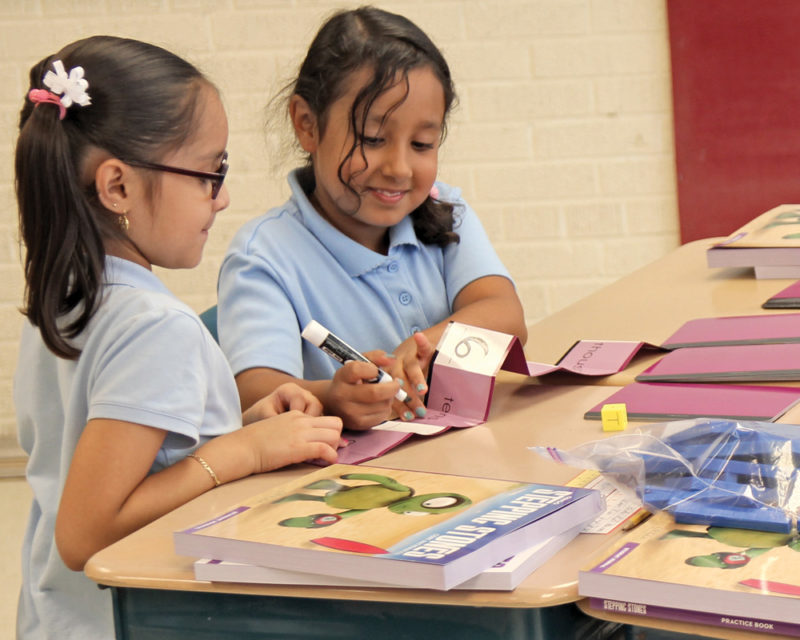Insights
The What, Why, Who, When, & How of Math Manipulatives
Math manipulatives can be powerful tools to help students make sense of mathematics, tools that they can use to model concepts, justify their thinking, and solve problems. However, the manipulatives themselves don’t magically convey understanding. Rather, manipulatives must be carefully introduced, used correctly, and facilitated, as needed, by the teacher to ensure that children make the connection between the manipulative being used and the mathematical concept being studied.
What Are Math Manipulatives?
Math manipulatives are concrete objects that provide students with hands-on experiences to explore and investigate mathematical concepts and processes. Although math manipulatives such as counting boards and abaci have been used for thousands of years, it wasn’t until the late 1800s that the first maneuverable objects were designed specifically to teach mathematical concepts. In the early 1900s, Maria Montessori developed several materials to help elementary students better understand basic math concepts.
Today, a variety of math manipulatives, such as counters, connecting cubes, place-value cards, pattern blocks, geoboards, fraction strips, number lines, and base-ten blocks are commonly used in elementary classrooms. You can also use household items such as buttons, popsicle sticks, egg cartons, dried beans, color paper, etc. to make your own. The National Council of Teachers of Mathematics (NCTM) recommends using manipulatives to teach math at all grade levels.
Why Are Math Manipulatives Important?
Who Should Use Math Manipulatives?
Research indicates that all elementary students can benefit from having access to and using manipulatives to explore and understand mathematical concepts. In fact, research conducted by NCTM shows that even high school students learning calculus can benefit from using effective manipulatives!
Math manipulatives can be particularly useful when working with English language learners, students with learning challenges, or students struggling with basic math concepts. Since manipulatives are multisensory, they appeal to different learning styles and allow students to master math concepts in ways that resonate, helping to cement long-term learning.
For manipulatives to be effective, students must use them. Although you want to be familiar with how to use all of the manipulatives in your classroom, they shouldn’t be used primarily for teacher demonstration. It’s essential that students engage with manipulatives through hands-on learning so they can construct their own understanding of mathematical concepts and processes.
When to Use Manipulatives?
Using manipulatives when introducing new or complex math topics helps students make sense of the concepts behind the math and make their learning concrete. Later as they are more familiar with the topic, students can transfer to visual representations such as pictures and diagrams, and then to abstract mathematical symbols, following Jean Piaget’s stages of learning. It’s important to remember that the move from concrete to representational to abstract learning isn’t strictly linear and that students can benefit from using all representations, as it helps them make connections between them.
Manipulatives can, and should, be used in all of the elementary grades and for all types of math topics, including number sense, sorting and ordering, shape- and pattern-recognition, operations, fractions and decimals, measurement, spatial relationships, place value, negative and positive numbers, geometry, equivalent value, and probability. It’s important that you provide a range of appropriate manipulatives matched to the math topic you are teaching.
Manipulatives must fit the developmental level of the student. In kindergarten and first grade, students may use counters, real-world objects such as shells or crayons, or connecting cubes, whereas in third and fourth grades, base-10 blocks, numeral expanders, or number lines may prove more instructive.
How to Use Manipulatives?
1. Model the effective use of the various manipulatives made available to students, but remember, students need to be the ones actively using the manipulatives.
2. Provide time for students to play with and explore manipulatives before they use them for the first time.
3. Provide ready access to a variety of topic-appropriate manipulatives and let students select those that best help them understand the concepts they are working on. Students will quickly learn that there are multiple ways to solve a problem.
4. Ask questions to guide student discussion as they are working on their own or in groups with various manipulatives to ensure they connect the manipulative to the concept being taught.
5. Allow students to use a manipulative that you haven’t pre-selected for the topic at hand as you will learn a lot about their thinking and you may even find that they have discovered a novel solution.
6. Provide opportunities for students to explore their own questions and generate a variety of answers so that they understand that math can help them better understand issues of interest to them.
7. Encourage students to use manipulatives to review math concepts, but don’t require them to continue to use them when they no longer need them as the ultimate goal is for students to develop a symbolic understanding of math.
8. Send students home with math manipulatives (paper manipulatives are particularly portable) and have them teach their parents, most of whom probably didn’t use manipulatives when they learned math.




